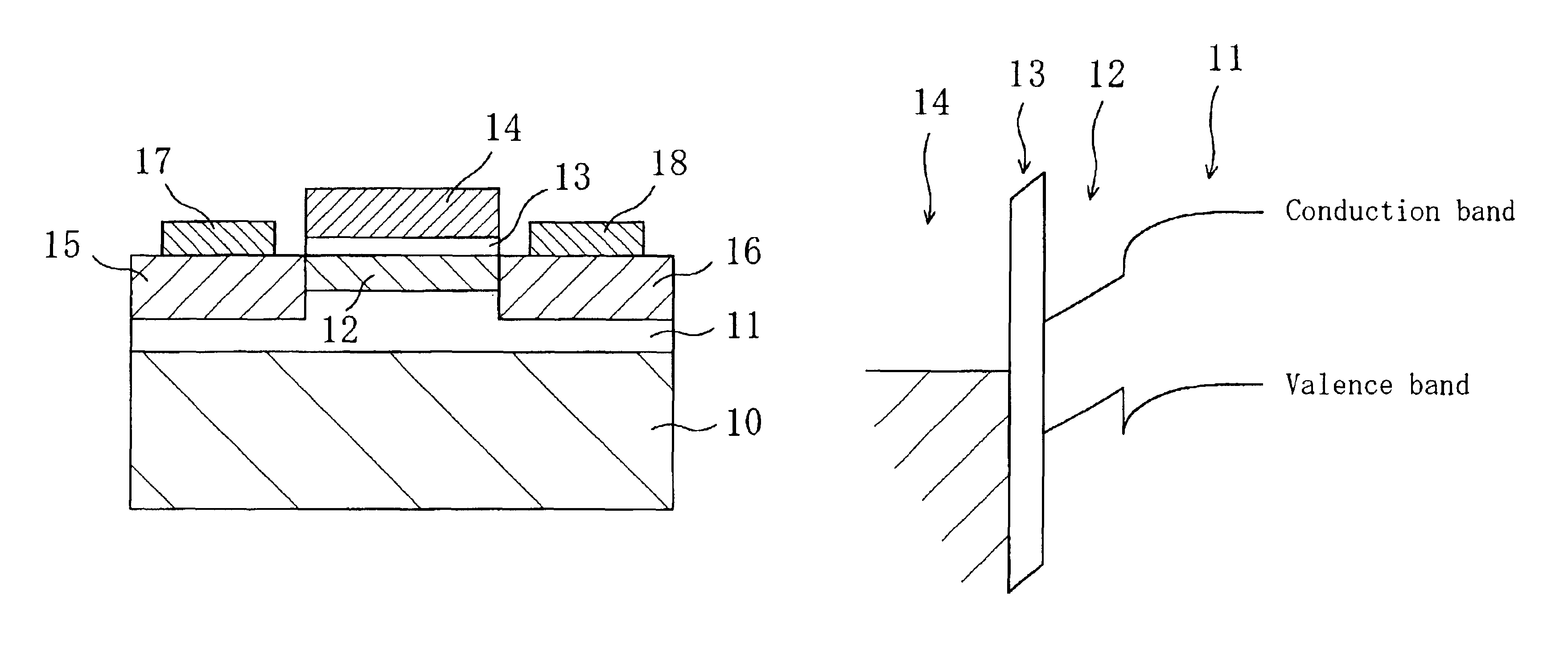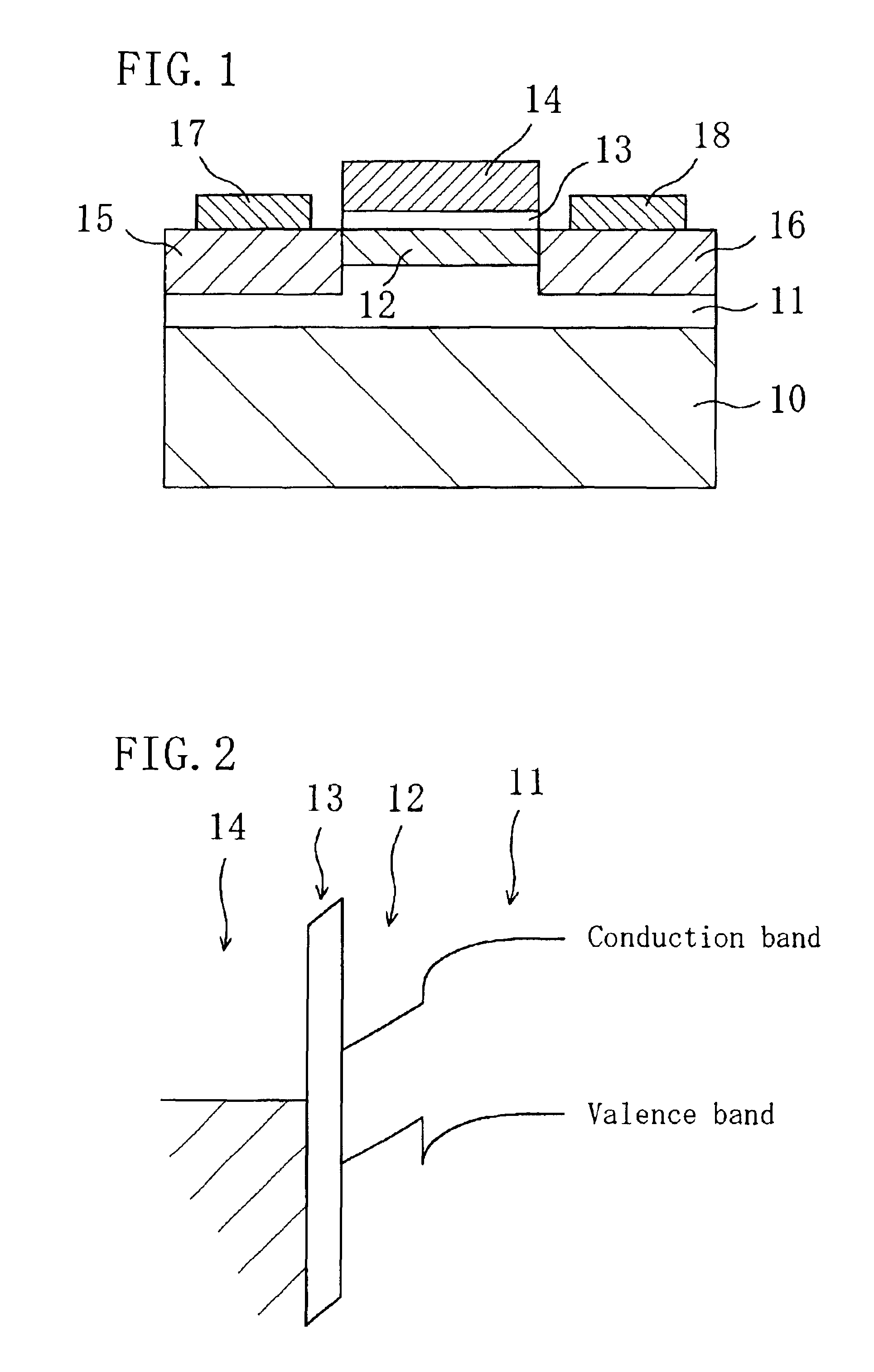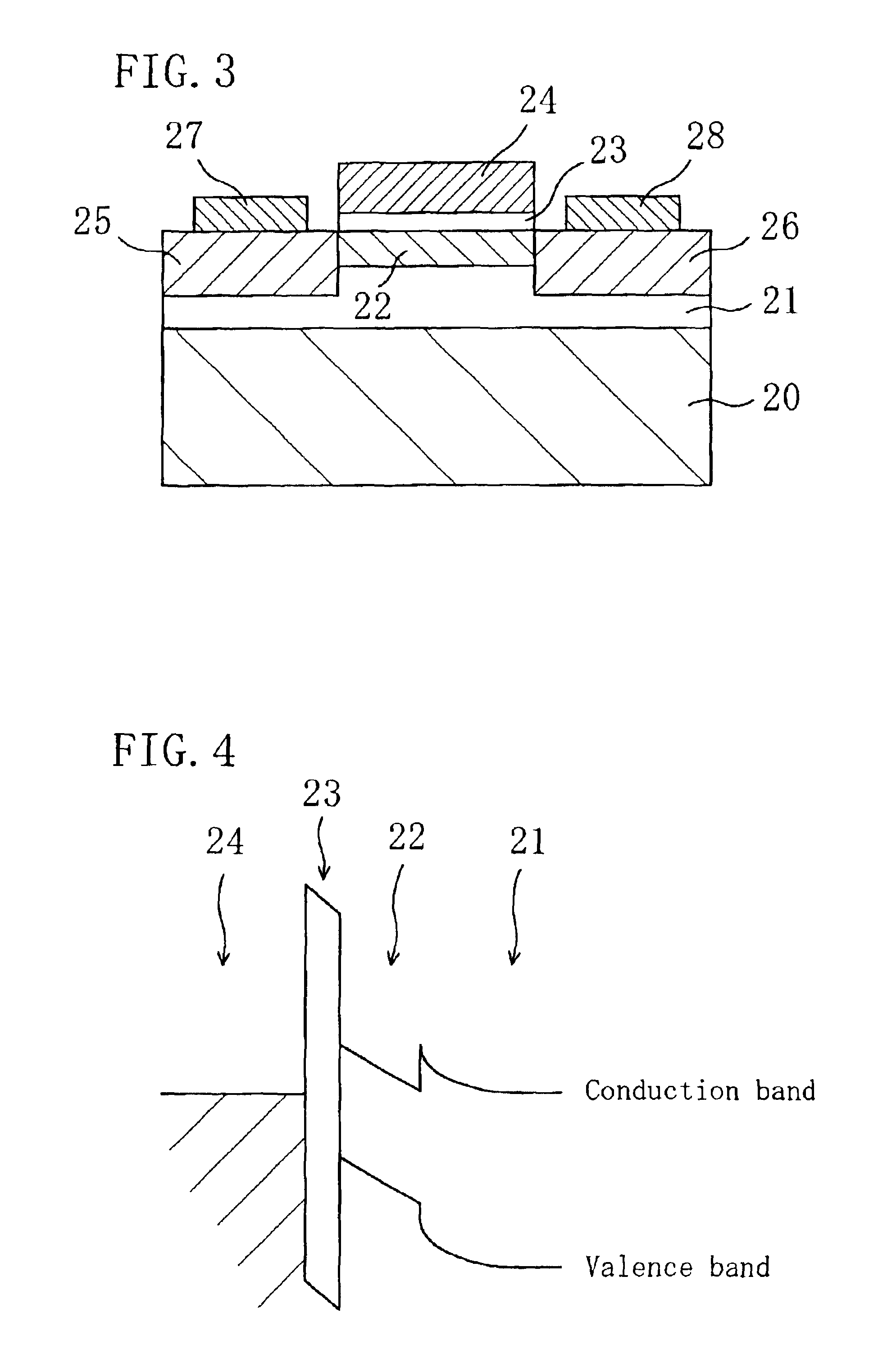Semiconductor devices and method for manufacturing the same
a semiconductor device and hetero junction technology, applied in the direction of semiconductor devices, transistors, electrical devices, etc., can solve the problems of deteriorating the characteristics of the transistor, large number of dislocations inherently present, and inability to expect the confinement of holes
- Summary
- Abstract
- Description
- Claims
- Application Information
AI Technical Summary
Benefits of technology
Problems solved by technology
Method used
Image
Examples
first embodiment
[0094
[0095]FIG. 1 is a cross-sectional view illustrating a structure of an n-MISFET in which tensile-strained silicon containing carbon is used as a channel according to the first embodiment of the present invention.
[0096]A substantially intrinsic Si layer 11, an SiC (Si1-yCy) channel layer 12, which is a silicon layer containing carbon, a CN gate insulating film 13 made of a carbon nitride layer (CN), which is a nitride, and a gate electrode 14 are deposited in this order on a p-type Si substrate 10. The Si layer 11, the SiC channel layer 12 and the CN gate insulating film 13 are all deposited by using an UHV-CVD method. Herein, it is preferred that the thickness of the SiC channel layer 12 is set to a value that is less than or equal to the critical thickness so that a dislocation due to a strain does not occur according to the carbon content. In the present embodiment, the carbon content of the SiC channel layer 12 is 2% (y=0.02), and the thickness of the SiC channel layer 12 is ...
second embodiment
[0104
[0105]FIG. 3 is a cross-sectional view illustrating a structure of a p-MISFET in which tensile-strained silicon containing carbon is used as a channel according to the second embodiment of the present invention.
[0106]A substantially intrinsic Si layer 21, an SiC (Si1-yCy) channel layer 22, which is a silicon layer containing carbon, a CN gate insulating film 23 and a gate electrode 24 are deposited in this order on an n-type Si substrate 20. The Si layer 21, the SiC channel layer 22 and the CN gate insulating film 23 are all deposited by using an UHV-CVD method. Herein, it is preferred that the thickness of the SiC channel layer 22 is set to a value that is less than or equal to the critical thickness so that a dislocation due to a strain does not occur according to the carbon concentration. In the present embodiment, the carbon content of the SiC channel layer 22 is 2% (y=0.02), and the thickness of the SiC channel layer 22 is 10 nm. A source region 25 and a drain region 26, w...
third embodiment
[0114
[0115]FIG. 5 is a cross-sectional view illustrating a structure of a complementary MISFET in which tensile-strained silicon containing carbon is used as a channel according to the third embodiment of the present invention.
[0116]An n-well 31 and a p-well 32 are provided on an Si substrate 30. A p-MISFET having substantially the same structure as that illustrated in FIG. 3 is provided on the n-well 31, and an n-MISFET having substantially the same structure as that illustrated in FIG. 1 is provided on the p-well 32. Moreover, the p-MISFET and the n-MISFET are electrically insulated from each other by a trench isolation insulating film 33.
[0117]Specifically, the Si layer 11, the SiC (Si1-yCy) channel layer 12, which is a silicon layer containing carbon, the CN gate insulating film 13 and the gate electrode 14 are deposited in this order on the p-well 32, substantially as in the structure illustrated in FIG. 1. Also in the present embodiment, the carbon content of the SiC channel l...
PUM
| Property | Measurement | Unit |
|---|---|---|
| effective mass | aaaaa | aaaaa |
| thickness | aaaaa | aaaaa |
| distance | aaaaa | aaaaa |
Abstract
Description
Claims
Application Information
 Login to View More
Login to View More - R&D
- Intellectual Property
- Life Sciences
- Materials
- Tech Scout
- Unparalleled Data Quality
- Higher Quality Content
- 60% Fewer Hallucinations
Browse by: Latest US Patents, China's latest patents, Technical Efficacy Thesaurus, Application Domain, Technology Topic, Popular Technical Reports.
© 2025 PatSnap. All rights reserved.Legal|Privacy policy|Modern Slavery Act Transparency Statement|Sitemap|About US| Contact US: help@patsnap.com



